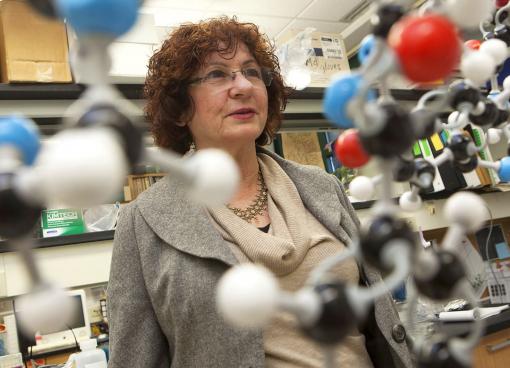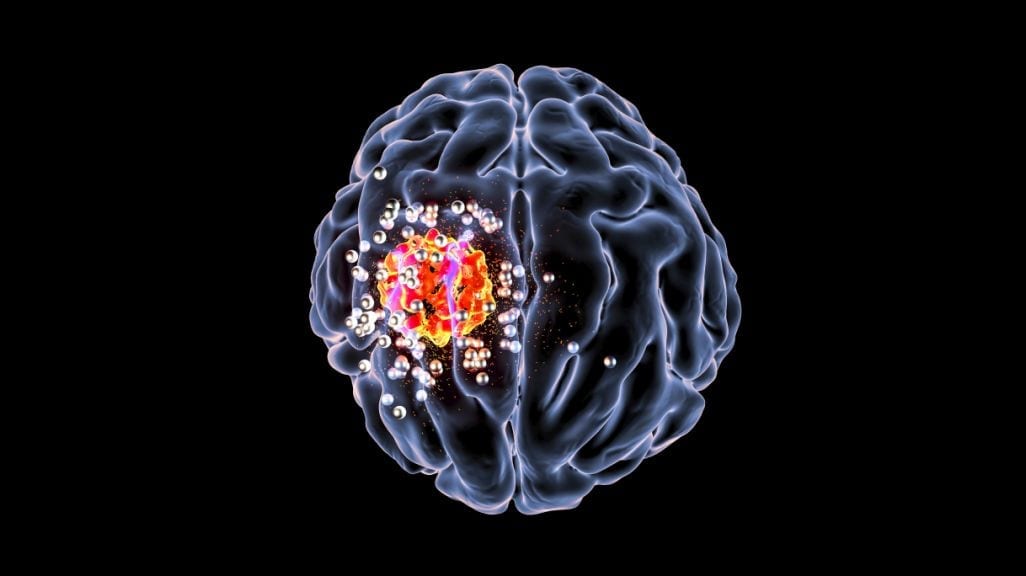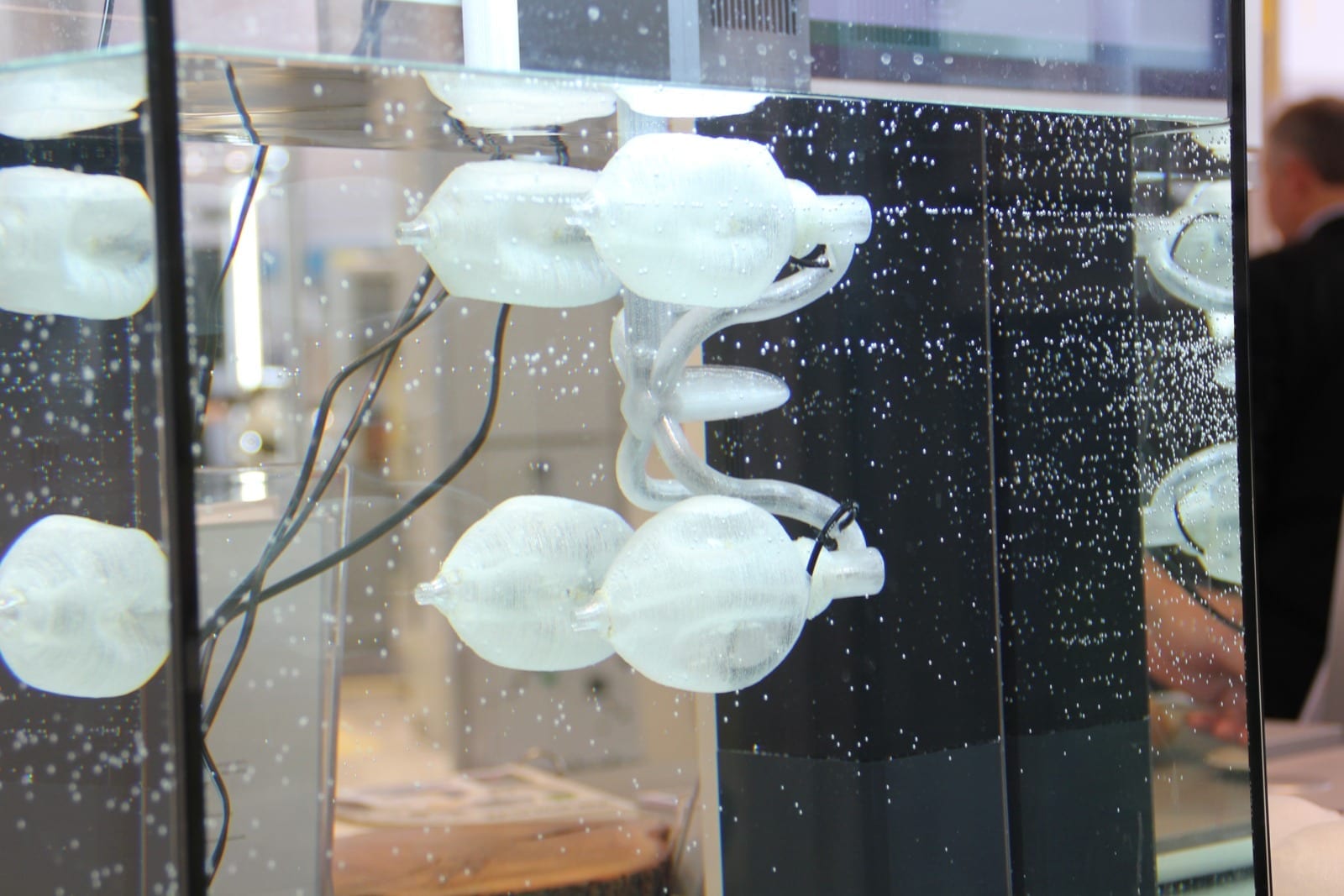
In a new study, a “bioadhesive” coating developed at Brown University significantly improved the intestinal absorption into the bloodstream of nanoparticles that someday could carry protein drugs such as insulin.
Such a step is necessary for drugs taken by mouth, rather than injected directly into the blood.
For protein-based drugs such as insulin to be taken orally rather than injected, bioengineers need to find a way to shuttle them safely through the stomach to the small intestine where they can be absorbed and distributed by the bloodstream. Progress has been slow, but in a new study, researchers report an important technological advance: They show that a “bioadhesive” coating significantly increased the intestinal uptake of polymer nanoparticles in rats and that the nanoparticles were delivered to tissues around the body in a way that could potentially be controlled.
“The results of these studies provide strong support for the use of bioadhesive polymers to enhance nano- and microparticle uptake from the small intestine for oral drug delivery,” wrote the researchers in the Journal of Controlled Release, led by corresponding author Edith Mathiowitz, professor of medical science at Brown University.
Mathiowitz, who teaches in Brown’s Department of Molecular Pharmacology, Physiology, and Biotechnology, has been working for more than a decade to develop bioadhesive coatings that can get nanoparticles to stick to the mucosal lining of the intestine so that they will be taken up into its epithelial cells and transferred into the bloodstream. The idea is that protein-based medicines would be carried in the nanoparticles.
In the new study, which appeared online June 21, Mathiowitz put one of her most promising coatings, a chemical called PBMAD, to the test both on the lab bench and in animal models. Mathiowitz and her colleagues have applied for a patent related to the work, which would be assigned to Brown University.
In prior experiments, Mathiowitz and her group have shown not only that PBMAD has bioadhesive properties, but also that it withstands the acidic environment of the stomach and then dissolves in the higher pH of the small intestine.
Adhere, absorb, arrive
The newly published results focused on the question of how many particles, whether coated with PBMAD or not, would be taken up by the intestine and distributed to tissues. For easier tracking throughout the body, Mathiowitz’s team purposely used experimental and control particles made of materials that the body would not break down. Because they were “non-erodible” the particles did not carry any medicine.
The researchers used particles about 500 nanometers in diameter made of two different materials: polystyrene, which adheres pretty well to the intestine’s mucosal lining, and another plastic called PMMA, that does not. They coated some of the PMMA particles in PBMAD, to see if the bioadhesive coating could get PMMA particles to stick more reliably to the intestine and then get absorbed.
The Latest Bing News on:
Oral protein-based drugs
- Veterinarians Answer Common Questions About Dog Preventive Care.on April 27, 2024 at 2:28 pm
This article provides expert opinion from two veterinarians on the various options for flea and tick prevention in dogs, as well as advice on whether dogs can eat eggs. It explores the benefits of ...
- Why Does the Keto Diet Cause a Skin Rash?on April 27, 2024 at 4:39 am
Keto rash, or prurigo pigmentosa, is a rare, inflammatory skin condition that causes a red, itchy rash with bumps that can look like a web. Here’s what to know ...
- Questions About Cat Preventive Care? Veterinarians Have The Answer.on April 25, 2024 at 2:28 pm
Jisha S Bachelor of Veterinary Science · 3 years of experience · India American Shorthair cats should be fed a balanced diet of high-quality commercial cat food, whether dry kibble or wet canned food.
- Targeting specific protein regions offers a new treatment approach in medulloblastomaon April 25, 2024 at 12:32 pm
Medulloblastoma (the most common malignant childhood brain tumor) is separated into four molecular groups, with Group 3 bearing the worst prognosis. By studying EP300 and CBP, critical proteins in ...
- The Difference Is the Data: Drug Discovery’s AI Revolutionon April 25, 2024 at 4:00 am
New data-intensive platforms continue to leverage artificial intelligence tools for improved speed and failure rate reductions for drug discovery.
- Migraine Sufferers In England May Soon Be Able To Access Preventative Drug Here's How Atogepant Workson April 24, 2024 at 8:01 pm
A drug that can help prevent migraines could soon be available on the NHS. Atogepant (brand name: Aquipta) was recently recommended by the National ...
- Cows' milk particles used for effective oral delivery of drugson April 24, 2024 at 11:16 am
Researchers have found that tiny particles present in cows' milk could offer, for the first time, an effective method for the oral delivery of RNA drugs.
- 4 Reasons Weight Loss Drugs Aren't Working for Youon April 24, 2024 at 8:52 am
Sleeping poorly and being stressed out can also limit the body’s ability to lose weight. A lack of rest often leads to an imbalance in hunger hormones, which stimulates appetite and encourages fat ...
- Day One takes on Novartis with FDA nod for Ojemda in broader common childhood brain tumor useon April 23, 2024 at 7:13 pm
Another drug is in town for common pediatric brain tumors. Compared with an incumbent offering from Novartis, the newcomer boasts an FDA approval covering a broader patient population. | Another drug ...
- Revive Therapeutics Announces Type C Meeting Request Granted by FDA for Clinical Study of Bucillamine to Treat Long COVIDon April 23, 2024 at 6:00 am
The CDC estimates that 7.5 percent of U.S. adults have long COVID symptoms 1. David Cutler, PhD, a professor of economics at Harvard University, estimates in a recent research disclosure that the ...
The Latest Google Headlines on:
Oral protein-based drugs
[google_news title=”” keyword=”oral protein-based drugs” num_posts=”10″ blurb_length=”0″ show_thumb=”left”]
The Latest Bing News on:
Bioadhesive
- DCU academics recognised at annual Presidents Awards for Researchon April 25, 2024 at 8:49 am
Prof Nicholas Dunne, Dr Louise Hopper and Dr Danny Marks received awards in recognition of outstanding and sustained research contributions in their field, with wide reaching social impact.
- Vietnam Bioadhesives Market 2024 Major Players, Competitive Spectrum, Revenue Share and Sales Projections by 2032on April 17, 2024 at 9:15 pm
The recent analysis by Report Ocean on the “Vietnam Bioadhesives Market” Report 2024 to 2032 revolves around various aspects of the market, including characteristics, size and growth, segmentation, ...
- Revolutionary Tagging Method Breaks Barriers for Marine Research in Falmouth, USAon April 17, 2024 at 8:12 am
This footage was filmed and produced 16 April 2024. [Note: no sound] In a landmark advancement for marine research, scientists have unveiled a groundbreaking tagging method poised to revolutionize the ...
- New tagging method provides bioadhesive interface for marine sensors on diverse, soft and fragile specieson April 16, 2024 at 8:40 am
Tagging marine animals with sensors to track and study their movements can provide researchers with important environmental and behavioral information, including energy usage, habitat changes, and ...
The Latest Google Headlines on:
Bioadhesive
[google_news title=”” keyword=”Bioadhesive” num_posts=”10″ blurb_length=”0″ show_thumb=”left”]











